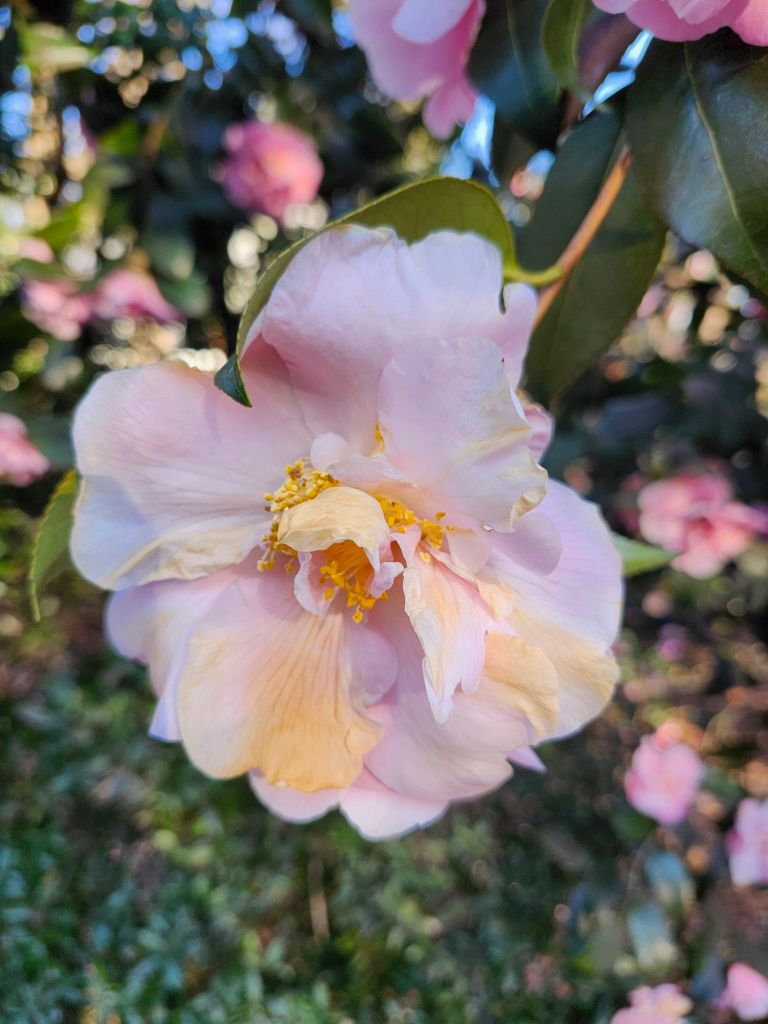The small rear lawn is littered by petals of ‘Merrill’ magnolia that drift on the breezes. Six days of peak flowering were a bonus before a twenty-five degree (Fahrenheit) freeze began a decline that will soon turn today’s limp flowers to brown mush. The gardener disturbed by the nearly annual freeze damage should simply plant some other tree since no protection against cold is practical.


While early flowering ‘Merrill’ and ‘Royal Star’ are most susceptible to injury (only to flowers), later flowering magnolias were not damaged. I look forward to pale yellow blooms from ‘Elizabeth’ and brighter yellows from ‘Yellow Bird’ (and other purple flowered magnolias) and hope to equal the glorious week of flowering before the next spell of cold.


Early spring alternatives that are not susceptible to cold damage are many. Redbuds (Cercis canadensis, below) in upright and weeping forms, and with yellow and purple foliage in addition to the standard green, will flower in the next week. None will be damaged in our coldest spring freezes.

The spring flowering (Camellia japonica) and two tardy autumn flowering camellias are nearing their peak bloom a few weeks later than a year ago, but with more typical timing. Flowers of ones in colder areas of the garden show some damage from the freeze, but another degree or two colder would result in many browned flowers. Fortunately, unopened buds remain that will continue the camellias’ flowering.


Again, protecting the large camellias is impractical, so the browned blooms alongside fresh flowers must be tolerated.


Beautiful!